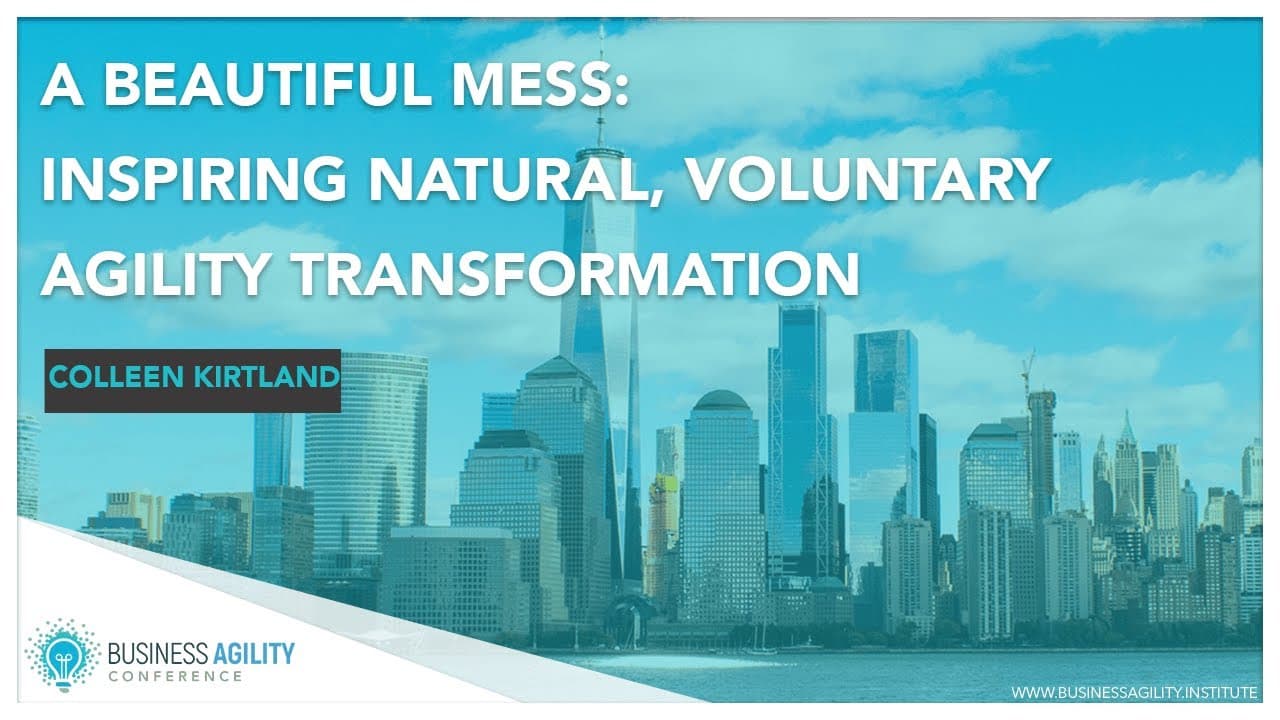Thank you so much for having me today! If this isn’t an example of responding to change over following a plan, I don’t know what is. I should be screen-sharing right now, and I wanted to share a little background on the title of this talk: The Beautiful Mess.
I chose the word "mess" not only because of its conventional meaning but also because of something I learned last year when my husband and I had the privilege of visiting the Galápagos Islands. Our naturalist marine biologist guide explained that when a whole pile of marine iguanas slither over each other, fishing, hunting, and surviving, it’s called a "mess."
I thought this was the perfect way to start this talk—using nature as our guide. We've heard from so many wonderful speakers throughout this conference, and I’ve been diligently following along remotely. I may leave you with more questions than answers, but that’s intentional. I’ll be interspersing little bits of tales from Pacific Life, and if you have more curiosity, I invite your questions during the Q&A.
A Learning Journey
This talk honors the Scrum Alliance while also pivoting in a new direction. When I began my journey, the learning path seemed so clear. Many of us may have started with a Scrum Master certification—I certainly did years ago. From there, we experimented with different things, different companies, and different approaches. Step by step, I followed the learning path all the way to applying for a Certified Enterprise Coach (CEC).
That was about two and a half years ago. If you've been through the process, you know it’s arduous, as it should be. There are essays, recommendation letters from mentors and customers, and feedback loops. I completed Part One successfully, then moved on to Part Two—more essays, more reviews. I spent countless hours on this application, only to receive feedback that I wasn’t quite ready.
I respect feedback and value opportunities for growth. But as I continued along this path, something unexpected happened: profound boredom. It wasn’t that I wasn’t grateful for the learning experiences or the incredible educators along the way, but something about "Capital A" Agile felt... incomplete.
Looking back, I realized that Agile, as it was originally conceived, might already be in the late majority of adoption. That realization led me to a pivotal moment—I just couldn’t bring myself to complete the last leg of the CEC. And that was okay.
Discovering Systems Thinking
Around the same time, I took a course by Craig Larman, one of the founders of LeSS. More than the framework itself, what captivated me was Craig’s introduction to systems thinking. He encouraged us to map out the interconnectedness of organizations—how solving one problem in one area often creates unintended consequences elsewhere.
When I asked him how to begin learning about systems thinking, he simply said: "Just start somewhere." So I did. And in doing so, I coined what I call a "fifth precept" of the Agile Manifesto:
"I value unfettered, purposeful learning over the pursuit of professional certification."
It’s not that certifications aren’t valuable, but there was an entire world of learning that I wanted to explore. For the past two and a half years, I’ve been deeply immersed in systems thinking, and today, I want to share some inspiration from that journey.
Control is an Illusion, But Agency is Real
Through my study of systems thinking, I arrived at a key realization: Control is an illusion, but agency is very real.
We often think of control as our ability to steer an organization, predict the future, or enforce structure. But the reality is, we cannot control the entire system. What we do have is agency—the power to influence and adapt within the system.
Lessons from Nature: The Exploratorium and Complex Adaptive Systems
Once my eyes were opened to systems thinking, I started seeing it everywhere. One of my favorite places in San Francisco is the Exploratorium, a hands-on science museum founded by Frank Oppenheimer. He believed that people should understand science and systems, and his exhibits reflect that.
Synchronization: The Failure of Local Optimization
One exhibit, called Synchrony, features three metronomes placed on a moving platform. Initially, each metronome ticks at its own independent rhythm. But when the platform begins to sway, the metronomes gradually synchronize.
To me, this was a perfect metaphor for organizations. Individual teams may try to operate independently, optimizing locally, but broader forces—corporate structures, funding models, leadership changes—ultimately dictate alignment. We cannot ignore the larger system.
Murmuration: Change Starts Small
Another concept I’ve been fascinated by is murmuration, the way starlings fly in large, shifting flocks. Scientists have found that when a flock shifts direction, it starts with a few birds—two, then five, then more. No single bird "leads" the change, but together, they create fluid, adaptive motion.
This reminded me of Agile transformations. Maybe one small, inspired team can create a ripple effect that eventually shifts the entire organization. We don’t always need top-down mandates. Change happens when the conditions allow it.
Key Takeaways for Agile Practitioners
As I’ve explored systems thinking, I’ve found a few guiding principles that I now bring into my work:
1. Observe and Respect Initial Conditions
Meet people where they are. Every organization has a history and a context. For example, Pacific Life is an insurance company—risk aversion and careful decision-making are part of its DNA. Instead of resisting this reality, I embrace it and work within it.
2. Watch for Equilibrium as a Warning Sign
Stable systems are comfortable, but prolonged stability can signal stagnation. Growth and adaptation often require external disruptions. We should welcome fresh perspectives and outside ideas to keep our organizations evolving.
3. Understand System Constraints
Instead of fighting existing structures, find ways to work within them. For example, our funding model at Pacific Life is project-based. Rather than battling the PMO, we partnered with them to improve prioritization—an immediate, tangible improvement.
4. Change Starts with a Good Agent
Change doesn’t start "out there"—it starts with us. Whether we are formal leaders or influencers by example, we all have the power to be one of those "first seven birds" in the murmuration.
Final Thoughts
On this journey, I’ve shifted from directing change to whispering and understanding. Instead of pushing for control, I focus on fostering conditions where positive change can emerge naturally.
So, I leave you with this thought: Maybe we just need to let go and allow the beautiful mess to find its own pattern. And in that mess, each of us has the power to be a good agent of change.
Thank you.



